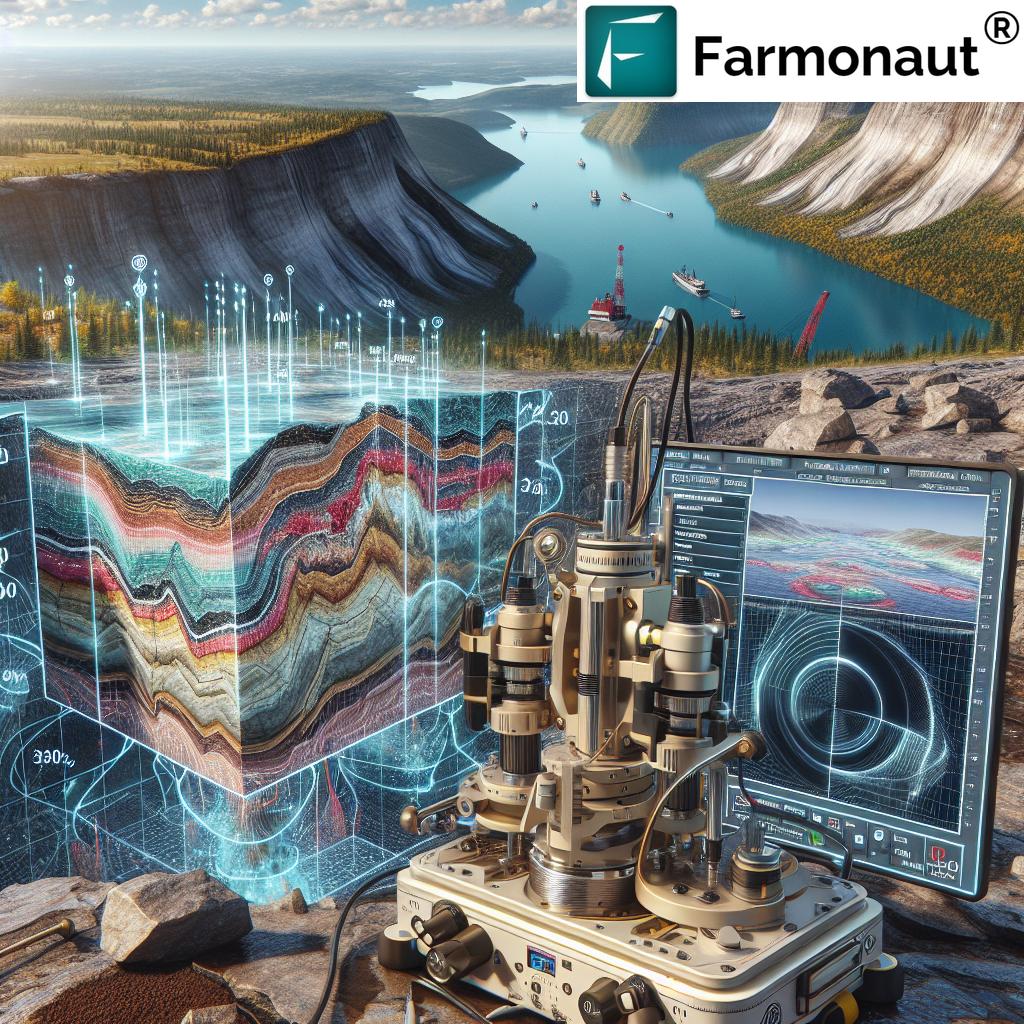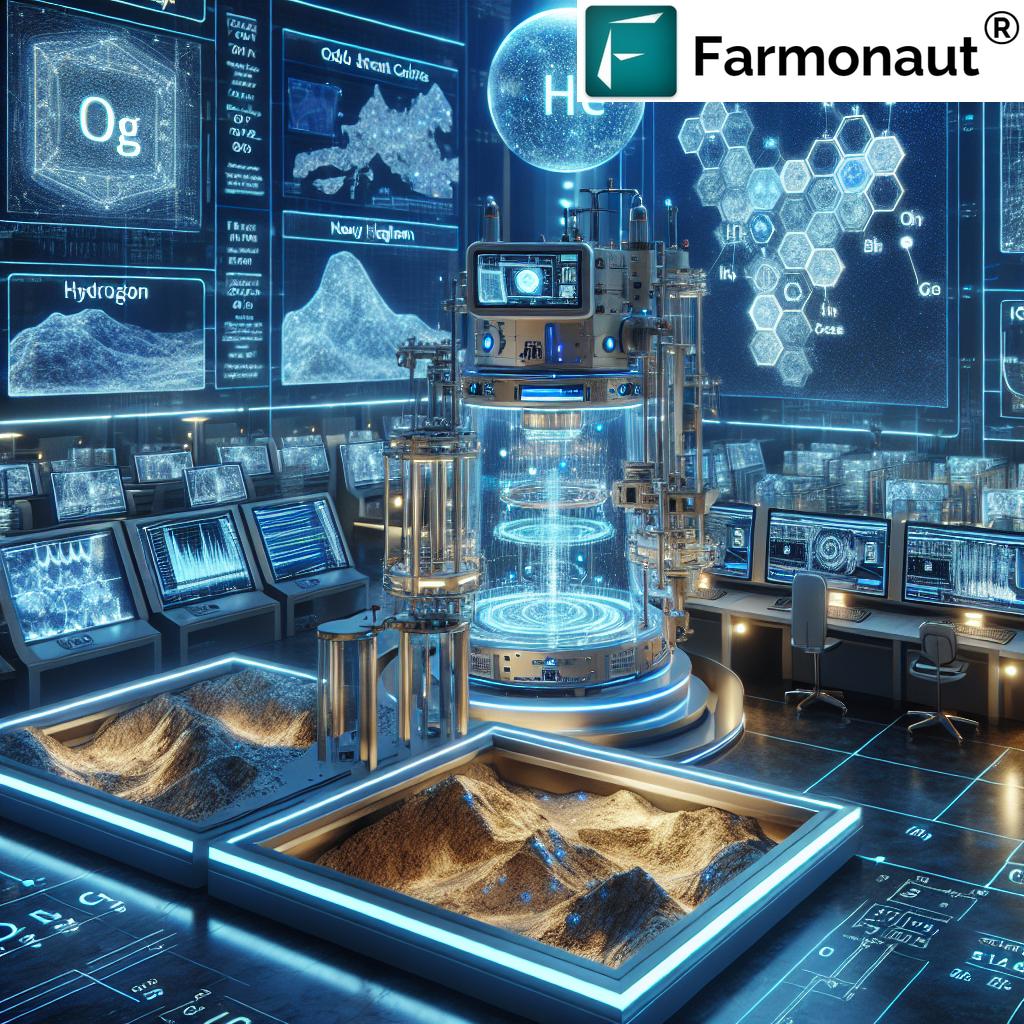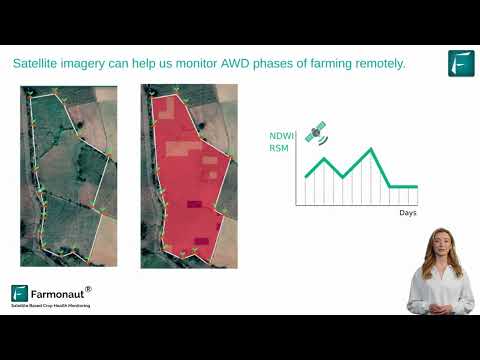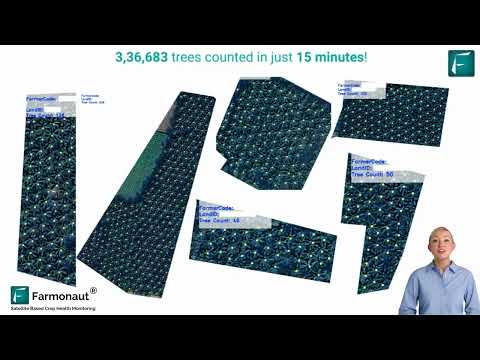Revolutionizing Clean Energy: Advanced Hydrogen Exploration Techniques in Quebec’s Mineral-Rich Regions
“Advanced geophysical methods like audiomagnetotellurism can detect potential hydrogen degassing zones in sedimentary rock formations.”
In the ever-evolving landscape of clean energy, we are witnessing a revolutionary shift in hydrogen exploration and mineral claim applications. This article delves deep into the cutting-edge remote sensing techniques and artificial intelligence algorithms being employed to locate prospective hydrogen deposits in Quebec’s mineral-rich regions. As we navigate through this exciting frontier, we’ll explore how these innovative approaches are not only expanding clean energy resources but also complementing existing gold and copper exploration projects.
The Dawn of a New Era in Hydrogen Exploration
The quest for clean, sustainable energy sources has led us to the doorstep of a groundbreaking discovery: natural hydrogen deposits. Quebec, with its vast and diverse geological landscape, has emerged as a focal point for this revolutionary exploration. The recent announcement by HI-VIEW RESOURCES INC. (CSE: HVW; OTCQB: HVWRF; FSE: B63) of their planned Phase 1 work program marks a significant milestone in this journey.
Our focus is on a portfolio of highly prospective mineral claim applications, strategically located in proximity to Quebec Innovative Materials Corp.’s (CSE: QIMC) recent hydrogen sample discovery. This discovery, boasting over 1,000 ppm of hydrogen, has set the stage for what could be a transformative period in clean energy exploration.

Cutting-Edge Exploration Techniques
The exploration program we’re embarking on leverages a suite of advanced technologies and methodologies:
- Artificial Intelligence and Target Mapping Algorithms: These sophisticated tools analyze known hydrogen occurrences to identify areas with similar spectral responses, potentially indicating new deposits.
- Gas Sampling from Soil: This technique is crucial for locating degassing zones associated with faults in the Témiscamingue rift.
- Gravimetry and Audiomagnetotellurism (AMT) Geophysics: These methods assess variations in sedimentary rock deposit thickness and help locate graben-related faults covered by quaternary sediments.
- Regional Remote Sensing Gas Surveys: Utilizing drones, these surveys provide valuable data for both hydrogen and helium exploration.
The integration of these techniques represents a paradigm shift in mineral exploration, particularly in the context of clean energy resources.
The Role of AI in Mineral Discovery
Artificial intelligence is playing a pivotal role in revolutionizing hydrogen exploration. By analyzing vast datasets and identifying patterns that might elude human observers, AI algorithms are dramatically increasing the efficiency and accuracy of target identification.
These AI-driven approaches are not limited to hydrogen exploration. They’re also enhancing our ability to locate gold and copper deposits, demonstrating the versatility and power of these advanced algorithms in the broader context of mineral resource development.
Geophysical Methods: Unveiling the Invisible
The application of geophysical methods like audiomagnetotellurism (AMT) and gravity surveys is crucial in our exploration efforts. These techniques allow us to peer beneath the Earth’s surface, revealing potential degassing zones associated with faults in sedimentary rock formations.
- Audiomagnetotellurism (AMT): This method uses natural electromagnetic signals to map subsurface electrical conductivity structures, helping identify potential hydrogen-bearing formations.
- Gravity Surveys: By measuring minute variations in the Earth’s gravitational field, we can detect density contrasts that might indicate the presence of hydrogen-rich structures.
These geophysical techniques, combined with advanced data processing and interpretation methods, are enabling us to map subsurface structures with unprecedented detail and accuracy.
Soil Gas Sampling: A Direct Approach
Soil gas sampling represents a more direct method of detecting hydrogen presence. This technique involves collecting and analyzing gas samples from the soil to measure hydrogen concentrations. It’s particularly effective in identifying degassing zones associated with faults in the Témiscamingue rift.
The process typically involves:
- Selecting sampling sites based on geological and geophysical data
- Extracting gas samples from various depths
- Analyzing samples using specialized equipment to detect hydrogen and other gases
- Mapping the results to identify areas of high hydrogen concentration
This method provides crucial ground-truth data that complements our remote sensing and geophysical surveys.
Drone-Based Remote Sensing: Precision from Above
The integration of drone technology in our exploration program marks a significant advancement in data collection precision and efficiency. Drones equipped with specialized sensors can cover large areas quickly, providing high-resolution data on surface features and subtle indicators of subsurface hydrogen presence.
“AI algorithms analyze spectral responses to identify areas with high-concentration hydrogen deposits, similar to recent discoveries in Quebec.”
Key advantages of drone-based remote sensing include:
- Ability to survey hard-to-reach or environmentally sensitive areas
- High-resolution imaging capabilities for detailed surface analysis
- Real-time data collection and processing for rapid decision-making
- Cost-effective compared to traditional aerial surveys
This technology is particularly valuable in identifying specific hydrogen targets and providing useful remote sensing data for both hydrogen and helium exploration.
Integrating Multiple Data Sources
The true power of our exploration program lies in the integration of multiple data sources. By combining information from AI algorithms, geophysical surveys, soil gas sampling, and drone-based remote sensing, we create a comprehensive picture of the subsurface environment.
This integrated approach allows us to:
- Identify the most promising areas for detailed exploration
- Reduce exploration risks and costs
- Enhance our understanding of hydrogen occurrence and distribution
- Make more informed decisions about resource development

Complementing Gold and Copper Exploration
While our primary focus is on hydrogen exploration, it’s important to note that these advanced techniques also enhance our ability to locate gold and copper deposits. The geological structures and processes that give rise to hydrogen occurrences often coincide with those favorable for precious and base metal mineralization.
This synergy allows us to:
- Maximize the value of our exploration efforts
- Identify potential multi-commodity resource areas
- Enhance the overall economic potential of our exploration projects
Our exploration program in Quebec’s mineral-rich regions is not just about hydrogen; it’s about unlocking the full potential of these geologically diverse areas.
The Future of Clean Energy Exploration
As we continue to push the boundaries of hydrogen exploration, we’re not just searching for a new energy source; we’re paving the way for a cleaner, more sustainable future. The techniques and technologies we’re employing today are laying the groundwork for tomorrow’s energy landscape.
Key aspects of this future include:
- Increased reliance on AI and machine learning for resource discovery
- More precise and environmentally friendly exploration methods
- Integration of hydrogen into existing energy infrastructures
- Development of new technologies for hydrogen extraction and utilization
The potential impact of these advancements extends far beyond the energy sector, promising to revolutionize industries and economies worldwide.
Comparative Analysis of Hydrogen Exploration Techniques
| Exploration Technique | Primary Application | Depth of Detection (m) | Accuracy Level (%) | Cost Efficiency (1-5) | Integration with AI | Complementary Mineral Exploration |
|---|---|---|---|---|---|---|
| Audiomagnetotellurism | Subsurface conductivity mapping | 100 – 10,000 | 85 – 95 | 3 | Yes | Gold, Copper |
| Gravity Surveys | Density contrast detection | 50 – 5,000 | 80 – 90 | 4 | Yes | Gold, Copper, Base Metals |
| Soil Gas Sampling | Direct hydrogen detection | 0 – 100 | 90 – 98 | 5 | No | Helium |
| Drone-based Remote Sensing | Surface anomaly detection | 0 – 50 | 75 – 85 | 4 | Yes | Gold, Copper, Various Minerals |
Challenges and Opportunities
While the potential of hydrogen exploration in Quebec’s mineral-rich regions is immense, we also face significant challenges:
- Technological limitations in deep subsurface detection
- Environmental considerations in exploration and extraction
- Regulatory frameworks still evolving for hydrogen resource development
- Economic viability of large-scale hydrogen production
However, these challenges also present opportunities for innovation and growth. As we continue to refine our exploration techniques and develop new technologies, we’re not just overcoming obstacles; we’re creating new possibilities for clean energy production and economic development.
The Role of Partnerships and Collaboration
The success of our exploration efforts relies heavily on partnerships and collaborations across various sectors. By working together with academic institutions, technology companies, and government agencies, we’re able to leverage a wide range of expertise and resources.
Key areas of collaboration include:
- Research and development of new exploration technologies
- Data sharing and analysis
- Environmental impact assessment and mitigation
- Policy development for sustainable resource extraction
These partnerships are crucial in ensuring that our exploration activities are not only successful but also sustainable and beneficial to local communities and the broader economy.
Investor Insights and Industry Implications
For investors and industry professionals, the advancements in hydrogen exploration techniques represent a significant opportunity. The potential for discovering large-scale, economically viable hydrogen deposits could revolutionize the clean energy sector and create new investment avenues.
Key considerations for investors include:
- The potential for rapid growth in the hydrogen energy market
- Diversification opportunities in clean energy portfolios
- Long-term sustainability and environmental benefits
- Technological advancements driving exploration efficiency and success rates
As the industry evolves, early adopters of these advanced exploration techniques may gain a significant competitive advantage in the clean energy market.
Conclusion: A New Frontier in Clean Energy
The exploration of hydrogen deposits in Quebec’s mineral-rich regions represents more than just a search for a new energy source; it’s a journey into the future of clean energy. By leveraging cutting-edge technologies like AI, remote sensing, and advanced geophysical methods, we’re not only revolutionizing the way we explore for resources but also paving the way for a more sustainable energy landscape.
As we continue to refine our techniques and expand our understanding of natural hydrogen occurrences, we’re opening up new possibilities for clean energy production, economic growth, and environmental sustainability. The future of clean energy is here, and it’s being shaped by the innovative exploration techniques being employed in Quebec’s mineral-rich regions.
FAQ Section
Q: What makes hydrogen exploration in Quebec unique?
A: Quebec’s diverse geological landscape, particularly the Timiscaming Graben formation, provides an ideal environment for natural hydrogen occurrences. The recent high-concentration discoveries have sparked increased interest and investment in the region.
Q: How do AI and machine learning contribute to hydrogen exploration?
A: AI and machine learning algorithms analyze vast datasets from various sources, including satellite imagery and geophysical surveys, to identify patterns and anomalies that may indicate the presence of hydrogen deposits. This significantly enhances the efficiency and accuracy of target identification.
Q: What are the environmental considerations in hydrogen exploration?
A: Environmental considerations include minimizing surface disturbance during exploration activities, managing water usage, and ensuring that any extraction methods developed are sustainable and have minimal environmental impact.
Q: How does hydrogen exploration complement gold and copper exploration?
A: The geological structures and processes favorable for hydrogen occurrences often coincide with those conducive to precious and base metal mineralization. This allows for multi-commodity exploration, maximizing the potential value of exploration efforts.
Q: What are the potential economic impacts of successful hydrogen discoveries in Quebec?
A: Successful hydrogen discoveries could lead to the development of a new clean energy industry in Quebec, creating jobs, attracting investment, and potentially positioning the region as a global leader in hydrogen production and technology development.
Earn With Farmonaut: Affiliate Program
Earn 20% recurring commission with Farmonaut’s affiliate program by sharing your promo code and helping farmers save 10%. Onboard 10 Elite farmers monthly to earn a minimum of $148,000 annually—start now and grow your income!
As we continue to push the boundaries of hydrogen exploration and clean energy development, the future looks bright for Quebec’s mineral-rich regions. The innovative techniques and technologies being employed today are not just shaping the future of energy exploration; they’re paving the way for a more sustainable and prosperous tomorrow.
Explore More with Farmonaut:







